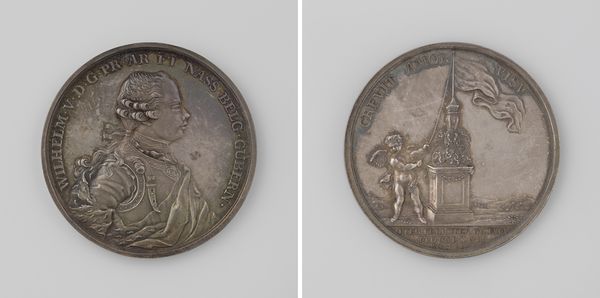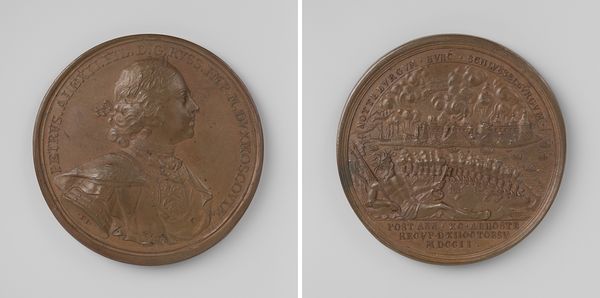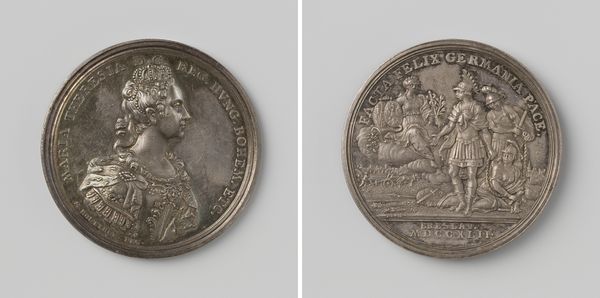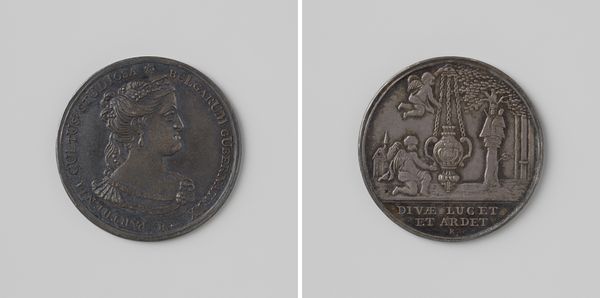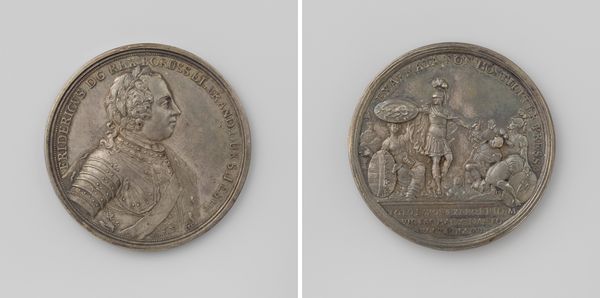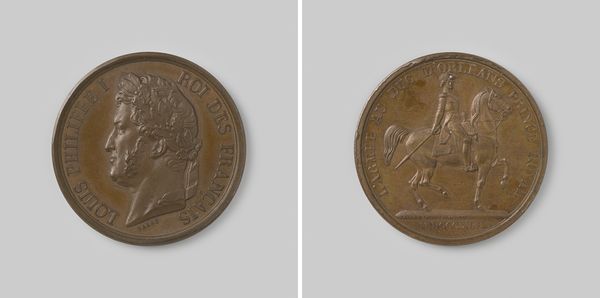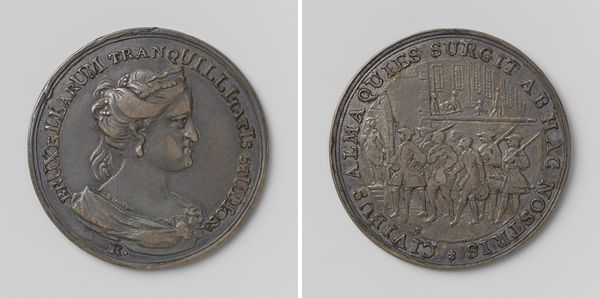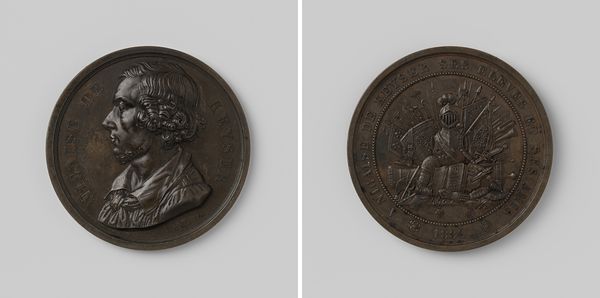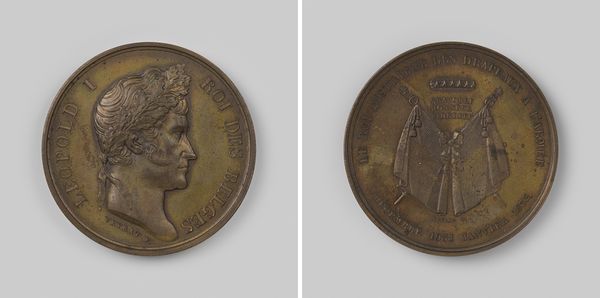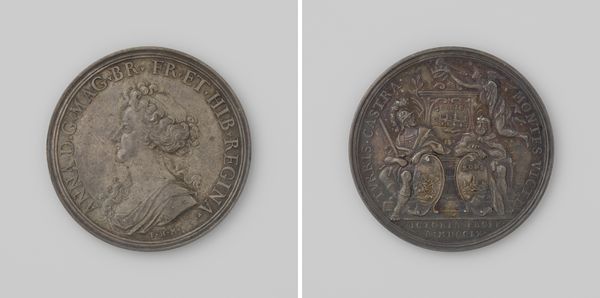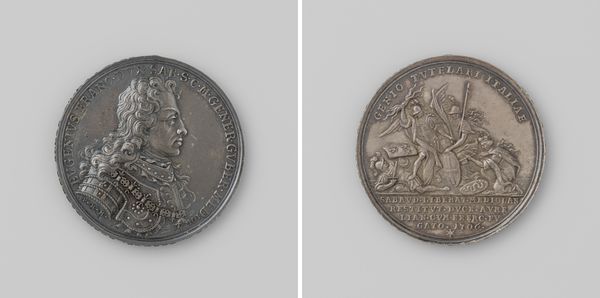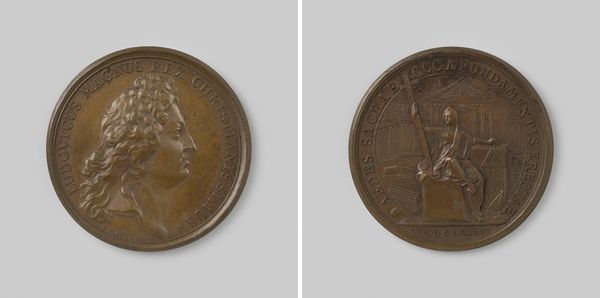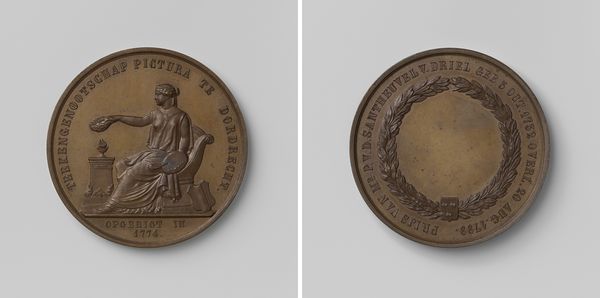
Gedenkpenning, aangeboden door de officieren van de mobiele schutterij te Utrecht aan hun kolonel J.D.C.C. baron d'Ablaing van Giessenburg 1834
0:00
0:00
metal, bronze, sculpture
#
portrait
#
medal
#
neoclacissism
#
metal
#
sculpture
#
bronze
#
sculpture
#
history-painting
Copyright: Rijks Museum: Open Domain
Curator: This striking bronze medal is titled "Gedenkpenning, aangeboden door de officieren van de mobiele schutterij te Utrecht aan hun kolonel J.D.C.C. baron d'Ablaing van Giessenburg," created in 1834 by David van der Kellen. It's currently held in the collection of the Rijksmuseum. Editor: It’s powerful, yet austere. The monochrome bronze and the meticulous detailing give it a weighty, almost melancholic presence. There's a strong sense of authority radiating from it. Curator: Absolutely. Kellen employs the visual language of Neoclassicism, evident in the crisp lines and the classical portrait style. We have a profile portrait on the obverse side and a symbolic composition of military emblems on the reverse. Editor: Given it’s a gift to a colonel, that classical formality is purposeful, I think. It’s not just about commemorating a man, but also solidifying the idealized image of military leadership, right? I am also noticing that the reverse shows a moment of militarization where national identity and military infrastructure was a necessity during that time period. Curator: Precisely. Note the arrangement of cannons, flags, and weaponry. The craftsmanship here reinforces its intended purpose as a commemorative object, meant to project strength and honor. The artist uses composition, light, and shadow, all within a very constrained space. It highlights a hierarchical society, doesn’t it? Editor: Absolutely, we also cannot neglect that period during the post-Napoleonic period when many European nations sought to stabilize power amidst shifts in global power dynamics. These historical touchstones allow for us to not see the art as only that. But it lets us connect the dots between aesthetic decisions and cultural values. Curator: Looking at the visual construction in this piece, you almost get a study in miniature of grand historical painting from this time, boiled down and concentrated. Editor: Thinking of how these values and aesthetic choices play out, especially as the product commemorates figures and institutions, invites an intersectional lens when thinking of militarization and nationalism. Curator: Yes. Overall, the medal allows one to examine a microcosm that reveals broader cultural assumptions that resonate throughout the art and historical accounts. Editor: It’s a potent material reminder to seek an opening, as well as an examination, to better understanding the intersections of history and personal identity.
Comments
No comments
Be the first to comment and join the conversation on the ultimate creative platform.
